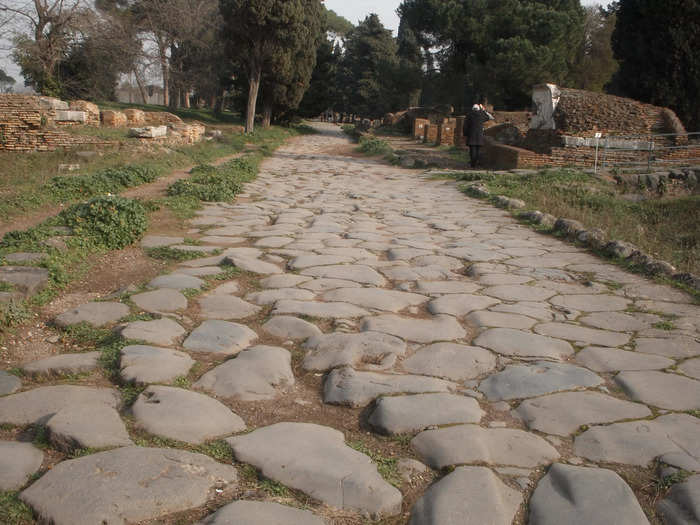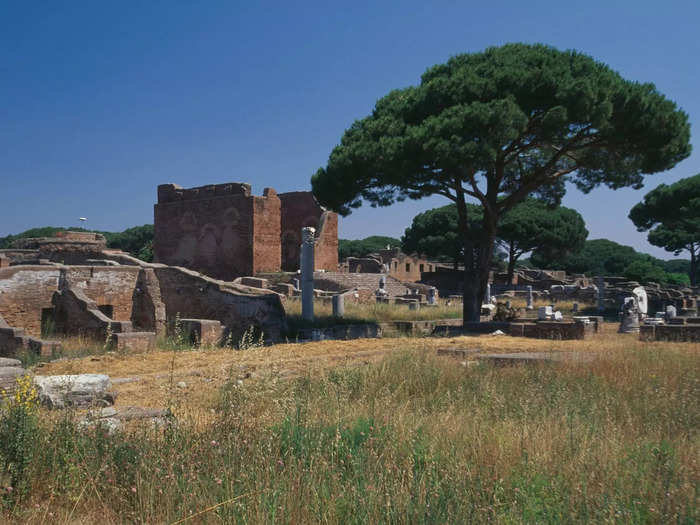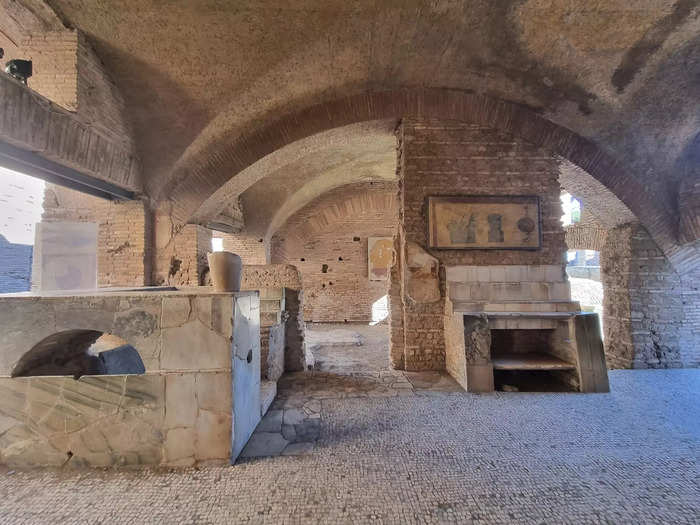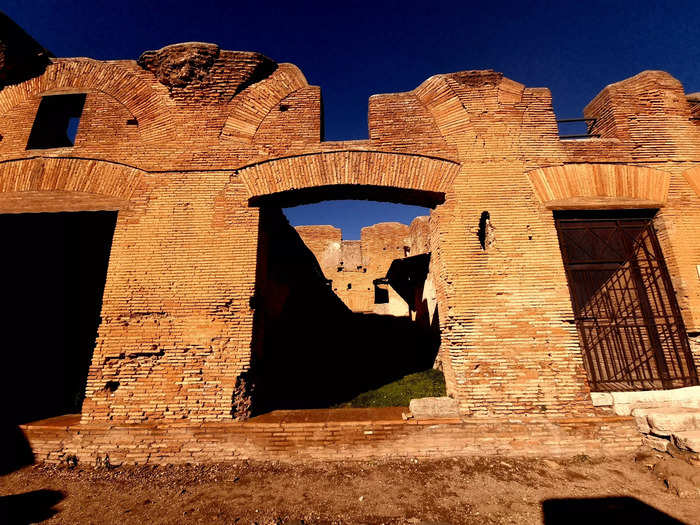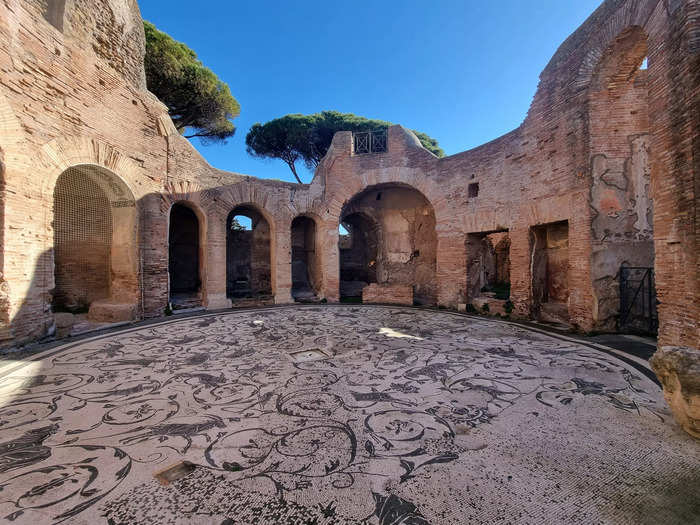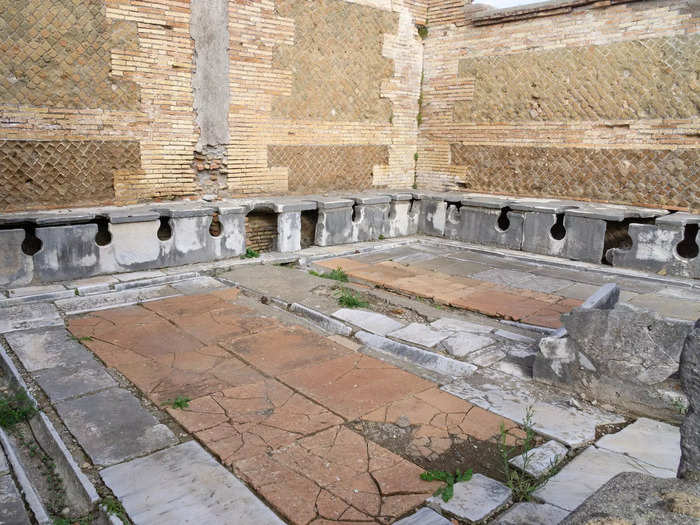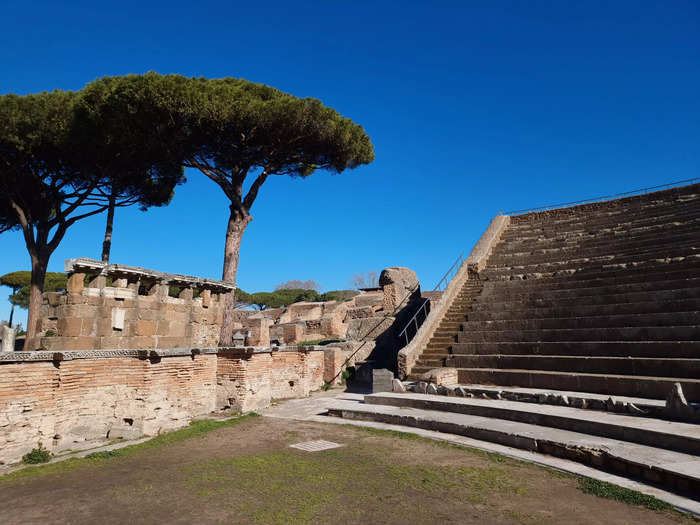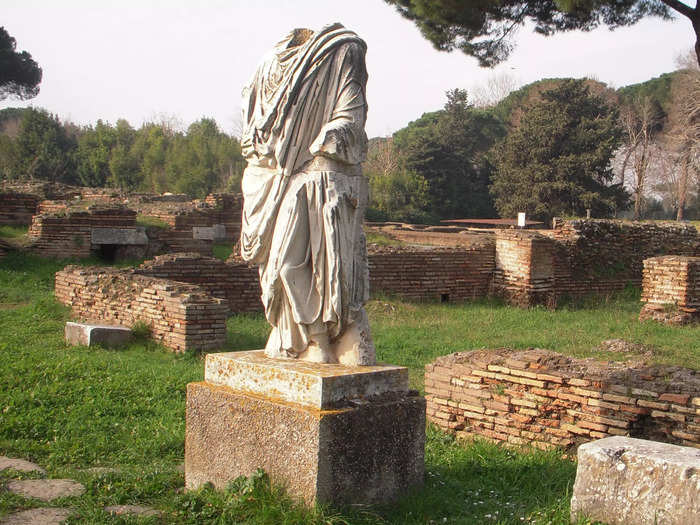Ostia Antica is an archaeological park located about 30 minutes from central Rome. Sarah May Grunwald
- I moved from California to Italy and have been working as a tour guide in Rome for eight years.
- The crowds in Rome seem to get bigger every year, so I recommend checking out Ostia Antica instead.
I'm a native Californian, but I've been working as a tour guide in Rome since 2008.
I've seen how increased tourism is affecting popular sites like the Colosseum and the Vatican. People spend hours waiting in lines, making it difficult to truly enjoy the experience, and it seems to get more crowded every year.
But just a 30-minute train ride away, Ostia Antica is a vast, uncrowded archaeological park that provides a glimpse into the daily life of ancient Romans.
In its heyday (around the seventh century BC), it was a major port and commercial hub of the Roman Empire. The ruins of upper-class Pompeii are more well-known, but Ostia Antica lets you see how everyday working-class Romans lived.
Here are my favorite things to see at the underrated archeological site.
The necropolis is located right near the entrance.
Tombs and other burial markers can be found along the road through the necropolis. Sarah May Grunwald
Located at the entrance to the park, just outside the city walls, the necropolis shows how Romans used to honor and celebrate the dead.
Elaborate tombs honor the dead and mosaics depict the underworld.
There are also tombs with banquet tables where the living would celebrate the life of the deceased.
At the center of the ancient city, you'll find the forum.
There are remains of temples and central buildings in the forum. DEA / M. BORCHI / Contributor/Getty Images
The main square, known as the forum, was the center of the city's political and social life. You can see the remains of the Capitolium and the Temple of Rome and Augustus.
From the forum, you can also observe how Roman cities were essentially built in a grid.
The thermopolium was almost like an ancient fast-food chain.
You can still see faint images of the menu on the walls. Sarah May Grunwald
The thermopolium, essentially an ancient fast-food restaurant, served hot food and drinks to locals and travelers.
The remains of the service counter and frescoes depicting the menu are still visible.
Wealthy residents used to live in the House of Diana.
There's a mosaic of the goddess Diana on the building. Sarah May Grunwald
The House of Diana is a well-preserved residence that belonged to a wealthy merchant in Ostia Antica.
It was decorated with fine mosaics and frescoes, and the house takes its name from a mosaic depicting the goddess Diana.
Public baths were commonplace in ancient Rome.
There were typically public and private bathhouses in a Roman city. Sarah May Grunwald
The Roman Empire was known for its public bathhouses, which were equipped with hot and cold pools, saunas, and massage rooms.
Public bathing was an art form in ancient Rome. Baths served as a place for socialization, relaxation, and personal hygiene for all classes of society.
There are several public and private baths in Ostia Antica.
The public Baths of Neptune featured an open-air palaestra (where patrons once participated in different kinds of exercise) and shallow pools that would've been warmed to different temperatures.
In contrast, the private Baths of the Seven Sages are much smaller and would've been used by residents of nearby buildings. Its circular frigidarium (room for the cold bath) is paved with an incredible mosaic depicting hunting scenes and plants.
One of the most social spots in town was the public latrines.
The public toilets served as a gathering space. Massimo Salesi/Shutterstock
The various public latrines (toilets) are where ancient Roma comes to life.
Romans would come in with a stick, and the attendant would give them a clean sponge to attach to the end of it so they could wipe.
It was common for people to sit on the latrines while chatting and gossiping — using the toilets was a social activity.
You can still catch a show at the ancient theater.
The stone structure has been in use for thousands of years. Sarah May Grunwald
The theater at Ostia Antica is one of the best-preserved in Italy and seats up to 3,000 people.
In ancient times, it was primarily used for plays, music performances, and gladiatorial games.
But today, it still hosts performances of contemporary and classical music, ballet, and more in the summer. That means the theater has been in use for about 2,000 years.
If you want to dive deeper into the culture, check out the Ostia Antica Museum.
Copy of a statue at Ostia Antica — the original is in the museum. Sarah May Grunwald
The Ostia Antica Museum displays artifacts found during excavations of the ancient port city, including statues, pottery, and jewelry.
These smaller, site-specific museums are often full of little-known treasures. It's definitely worth a visit.

